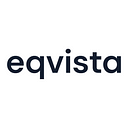Cap Table for Shareholders vs Cap Table for Founders
Business owners may find it challenging to accurately measure their company’s equity. The founders may get insight into the company’s ownership structure and dynamics using a well-maintained cap table or capitalization table management system. Founders who keep tabs on this information are better positioned to make fiscal choices that boost their company’s worth and increase its market capitalization. For shareholders, too, the cap table holds a lot of importance as it is useful to understand the firm’s organizational structure and clarifies their rights as stockholders. Let’s understand how the cap table holds significance for both shareholders and founders of a company.
A cap table, also known as a capitalization table, is a chart often used by startups to display ownership interests in the company. It includes a list of your company’s securities (such as stock, options, warrants, etc.), the price investors paid for them, and their respective ownership stakes in the business.
How do founders use the cap table?
Let’s understand how founders use a cap table and why it is important for them:
To understand the company’s equity structure
The company’s structure, founders’ stock ownership, fundraising history, and the impact of subsequent funding rounds can all be seen and understood. The company’s future success depends on its founders’ choices with this data.
Retain talent via employee options
When hiring new employees, make sure their incentives align with the business’s goals. Stock options are a fantastic tool for this purpose since they allow employers to match employees’ financial contributions with shares of stock. The number of options that have been awarded to employees, as well as the total number of permitted options, may be seen in the cap table.
Term sheet negotiations
You can do a better what-if analysis of a funding round with a clear picture of the ownership structure of your business. You may examine the effect of issuing additional options at various phases of the company’s development on your position and the company’s control, among other things.
Understand dilution
Founders may get a sense of the potential dilution from each fundraising round with the help of a capitalization table. The founders may then use this information to make better choices about handling subsequent financing rounds and maintaining control of the firm.
Who are the shareholders in a company?
Those with equity investments in a firm are considered shareholders, including the company’s founders and any employees with vested stock options, investors, or VCs. Shareholders have a vital role in the functioning of a business, both as owners and as voters and beneficiaries of dividends.
Most shareholders anticipate receiving dividends as a return on their investment. They are thus intimately linked to the business’s success. Thereby, a business needs to know its shareholders and successfully maintain its database.
Investors will appreciate the value of their investment in your firm if you are open and honest with them. A cap table is a useful tool for disseminating important information about a company’s shareholdings. The cap table must adhere to all legal standards, so make sure it does.
How do shareholders use the cap table?
Now that you know that shareholders also receive access to the capt table, let’s understand how they use it:
Keep track of their shareholdings
A cap table may be used by investors to check on their existing share ownership and maintain a careful watch on their shareholding. It is crucial to confirm that the information on current shareholdings is correct, particularly when the number of shares grows over time.
Make the investment decisions
A capitalization table helps prospective investors evaluate the firm and its organizational structure. Investors may make knowledgeable choices about obtaining funds to invest in the firm by looking at a cap table. This might assist them in discovering a suitable match with the firm’s investment round and provide them with a solid notion of the holdings in the company.
Term sheet negotiation
Similar to how founders negotiate the conditions of their investments, investors may do so using a cap table. Investors may evaluate the data and determine a fair portion of ownership in exchange for the amount they offer as funding using a cap table. Negotiations may become more accessible and more fruitful due to keeping the information in the cap table handy.
Plan exit strategy
The capitalization table is helpful to shareholders because it provides them with the information they need to decide on their ownership in the firm. Shareholders must analyze and comprehend their ownership interest in the business and the ownership structure, which could aid a shareholder in developing an exit plan for their investment.
Now you know how the cap table is an important tool for a business with equity distribution for both, founders and shareholders. In the past, hiring accountants, attorneys, and other specialists to manage your company’s shares and files took up considerable time and resources. But now, cutting-edge tools like Eqvista streamline the cap table management process for busy founders and provide a more effective and inexpensive approach to handling the company’s shares. Additionally, Eqvista makes it easy to share the cap table and relevant data with the shareholders, making disseminating the information easy. Both parties can benefit from an automated, accurate, and well-updated cap table for efficient collaboration.
